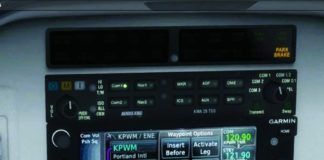Last January, the FAA changed internal policy on reporting potential pilot deviations. The stated goal was to discover “why adverse safety events happen” and identify the risks. The real-world fallout of this is pilots are getting warning letters in the mail for events they would have blown off in the past.
It’s become significant enough that the Air Line Pilots Association (ALPA) recently advised its members to voluntarily report even the most minor deviation from ATC instructions, even if it was the result of equipment failure or weather deviation. The form in question is similar to the NASA ASRS forms, but specific for heavy iron. ALPA says pilots who have been assured by controllers that the transgression is a minor one not worthy of FAA attention have found out later that they’ve been written up.
I’ve heard similar tales in GA flying where the “we’ve got a number for you to call” has been trundled out to the complete surprise of the pilot in question.
What items could generate a report from ATC? There’s the normal loss of separation, for sure, but there’s also loss of surface separation. If you got close enough to any vehicle, including airport cars or people, it may generate a report. Suspected loss of separation with terrain could generate a report.
Flying practice approaches under IFR and get a low-altitude alert from ATC? You might want to write up your story as to why. Making a low approach to a closed runway (such as you might do if only practicing an instrument approach), accidently poking into an ILS protected area on taxi if the airport is IFR, or missing a radio call where the loss of communication results in any ATC control action are a few more.
On that last count, one of the stories we know concerns a pilot who was IFR back up to New England and realized he was over JFK airport without being handed off from McGuire Approach in New Jersey to New York Approach. He flies the route so often he knows the NY frequency and he checked in. They gave him a number to call and the FAA mailed him a warning.
That brings up point two: If you don’t think it’s your fault, get the tapes reviewed to see whose lapse it was. As our story on page 9 says, this includes Flight Service if you think the briefer screwed up and missed giving you critical information. Remember that if you do call the FAA, everything you say can be recorded and used against you without any specific warning (an advisory that’s buried in the AIM is considered good enough).
On a more philosophical front, however, I find this whole effort deeply disturbing. Part of the beauty of the NASA ASRS program is that it exposes hazards with the tempting carrot of absolution and fosters a culture of trust. Substantive changes in FAA policies and regulations have resulted.
Now the Agency is trying to get at more issues by forcing controllers to wield the stick. The net result will probably be just a bunch of jumpy pilots, frustrated controllers and mountains of nuisance reports from all walks of pilots who file a report because they said “nine” instead of “niner.” —Jeff Van West




